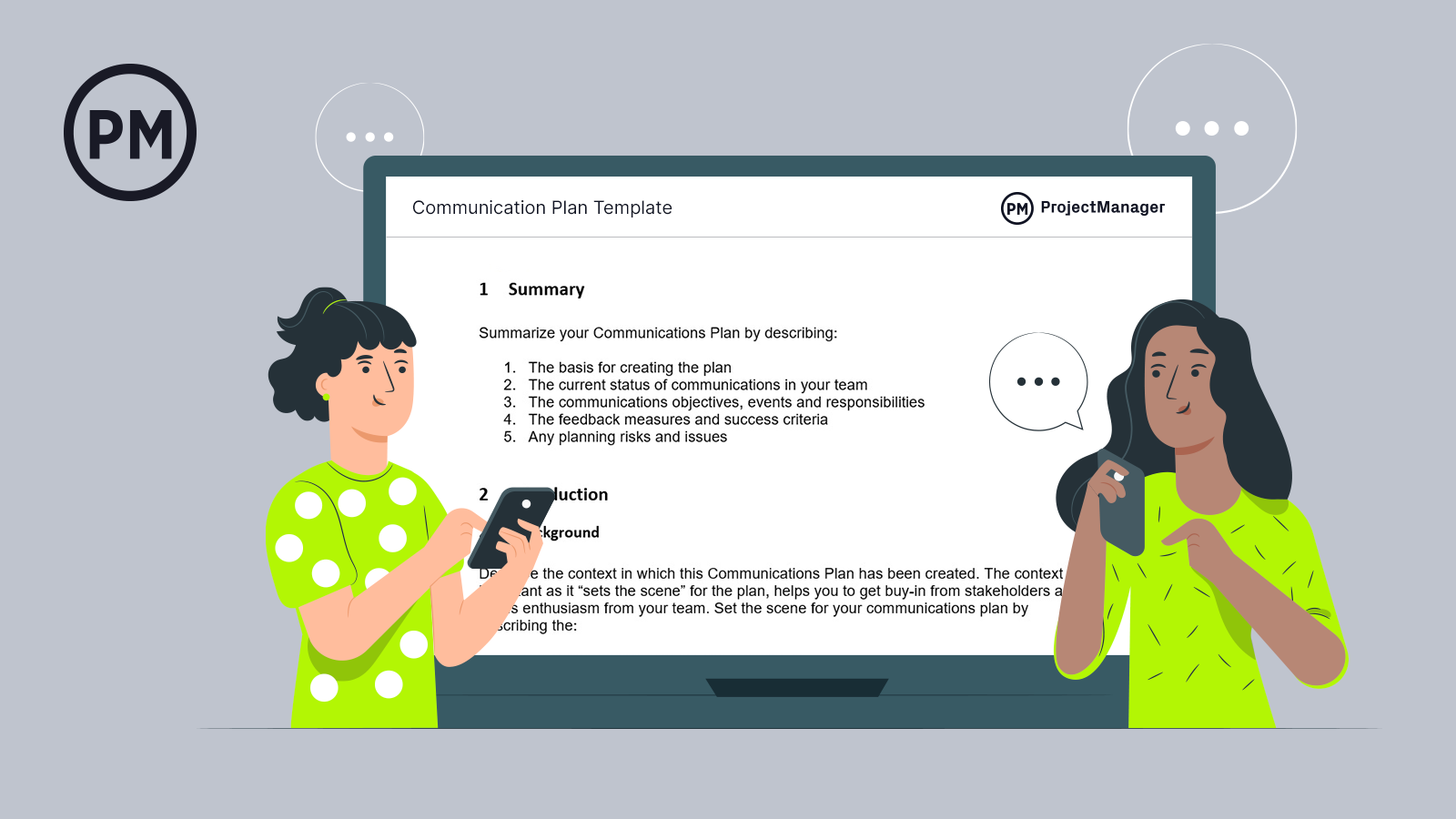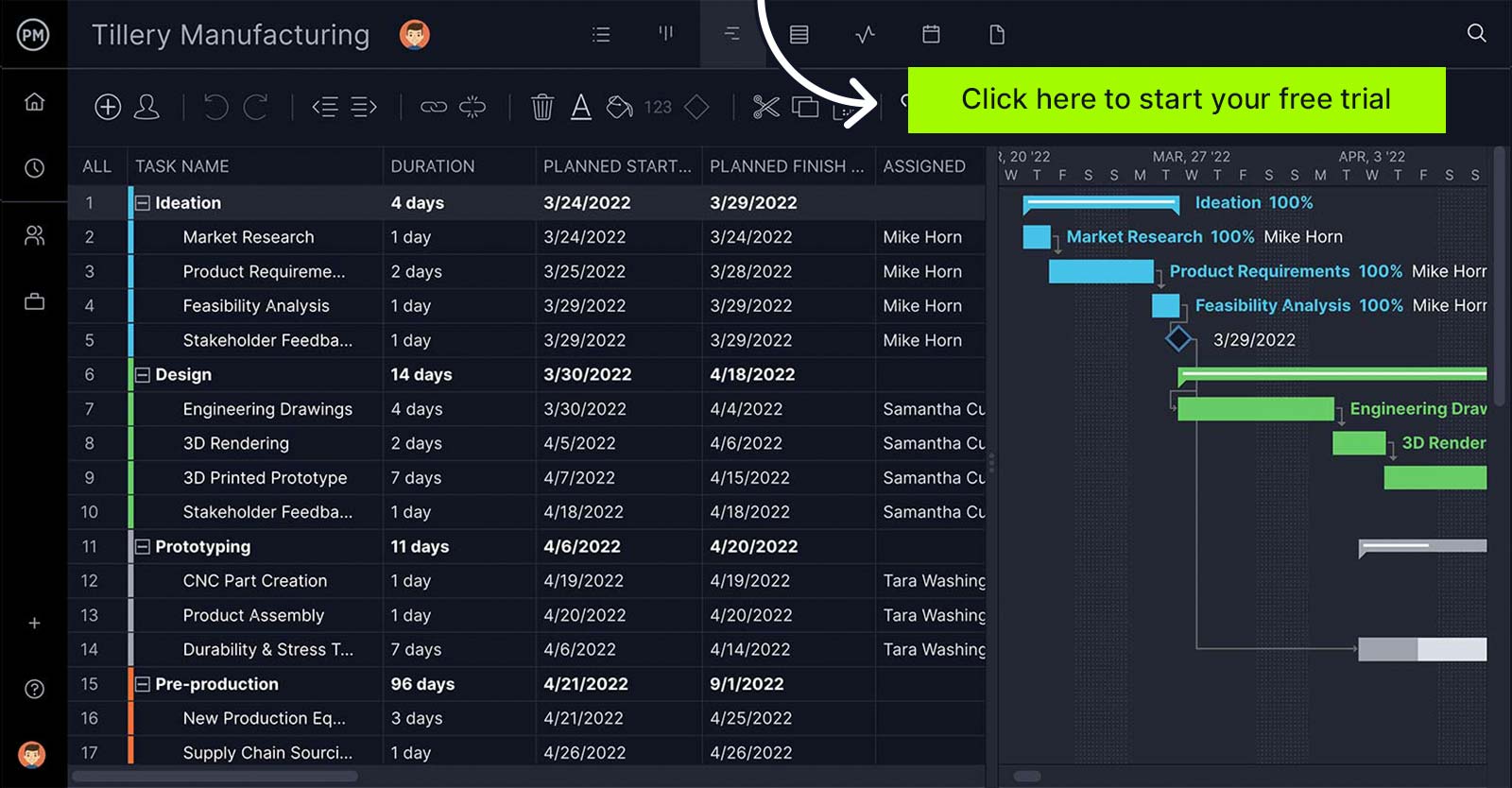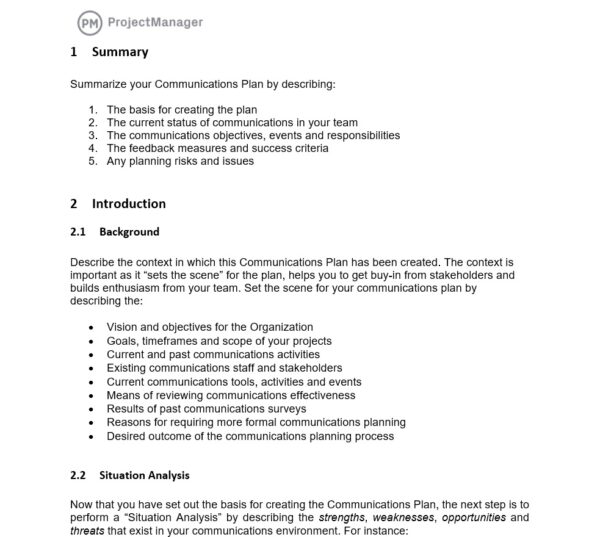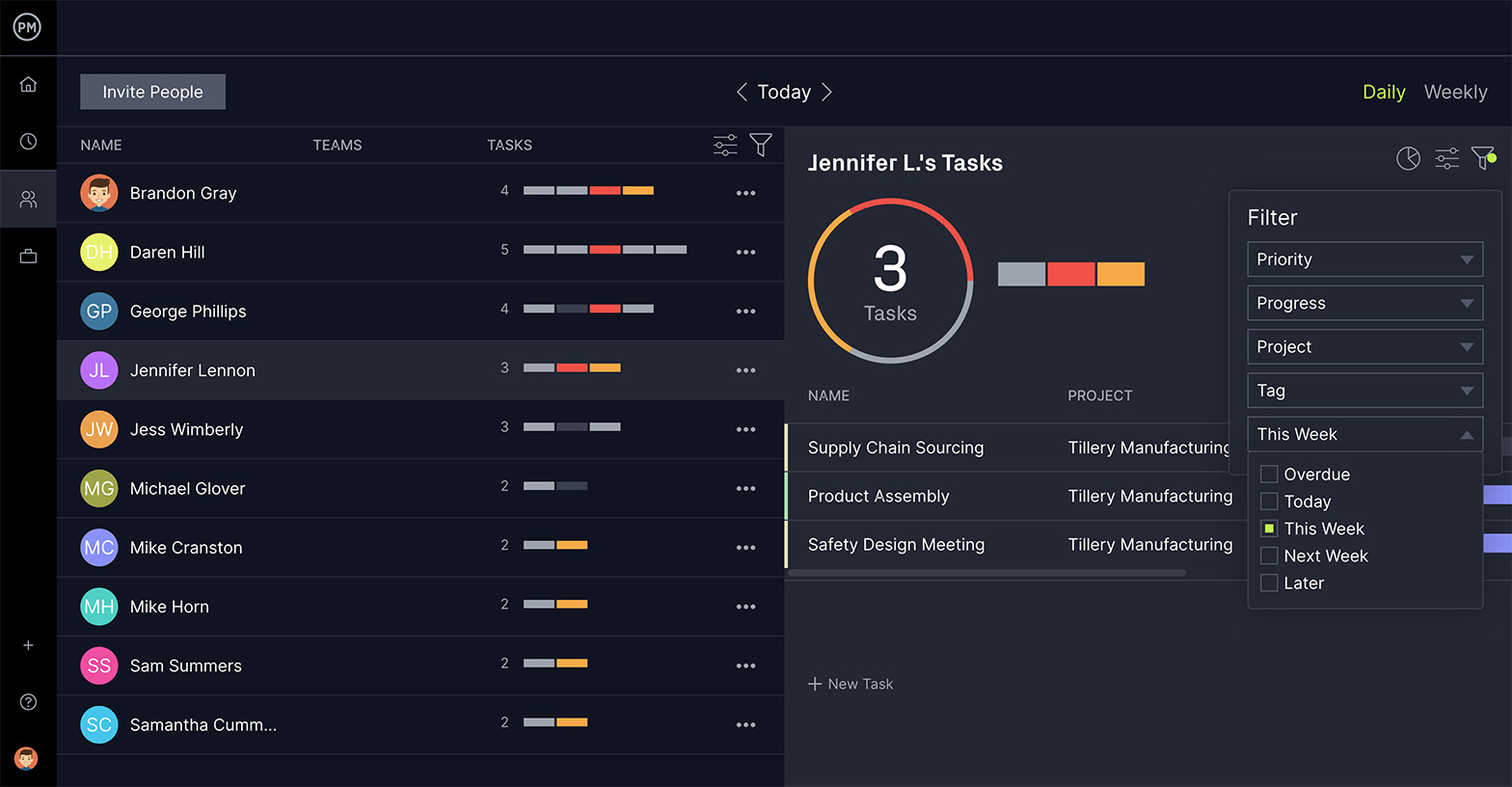All projects require communication between stakeholders. This seems simple enough, but sharing information with everyone clearly and consistently requires a plan. Without one, things become messy and stakeholders can become confused and unhappy.
That’s where communication planning comes into play.
What Is Communication Planning?
Communication planning is the process of laying out how communication will take place between team members and stakeholders, whether it be on a project, in an organization or both. In other words, managers use a communication plan to create a formal process for sharing information.
This includes creating systems of communication and order of operations to follow. This can sound dry, but it is ultimately a creative process and should be treated as such.
What Is the Purpose of a Communication Plan?
Creating a communication plan provides a framework sharing information, no matter what it’s regarding or who it’s being shared between. It’s easy to assume that communication is simple—a no-brainer. This is a common mistake. Because we often assume communication is natural, it’s easy to become informal.
Creating a plan gives you the exact steps to follow so that everyone understands the message and knows who to ask questions to if need be. Using a communication plan as the structure for your message creates a dependable resource for everyone to use.
Who Should Focus on Communication Planning?
Communication planning is a group effort, and all stakeholders should collaborate on creating the best organization-wide plan possible. Because they should be consistent no matter the department or project, it’s important that everyone understands them.
That being said, communication planning is most effective when led by an individual. Depending on the context of the plan (whether it will be instituted organization-wide or used for a single project) this person will vary. For example, a communication plan for an entire organization might be created by someone in HR or leadership. A special plan for a project, on the other hand, would be created by the project manager.

Get your free
Communications Plan Template
Use this free Communications Plan Template for Word to manage your projects better.
What Are the Steps in Communication Planning?
It’s easy to get lost in the weeds when creating a communication plan. To make sure you cover all your bases, follow these steps:
1. Determine Communication Needs
The best place to start is by determining your specific communication requirements. For example, it’s helpful to think about who will be communicating. Will different departments be communicating with one another? Will HR be communicating with the entire organization? All of these potential scenarios must be considered.
2. State Why Each Communication Is Necessary
One of the most important things to consider when creating a communication plan is why it’s even necessary. Like we mentioned above, communication can seem like second nature. Why do we need a plan at all? But when we pinpoint exactly why we need a plan and how that plan will enhance teamwork, we’re motivated to create something effective.
3. Establish How the Team Will Communicate
This step is fairly simple. Someone needs to decide exactly how communication will take place. In other words, what tools will the team use? For example, teams may use email for some messages and third-party apps, like Slack, for others. There may also be documents and reports that need to be completed and archived.
If you’re using a project management software like ProjectManager, then you can manage all your project plans, project communications and project documentation in one intuitive online platform.

4. Decide How Often Official Communication Will Take Place
Many plans set concrete intervals for communication, no matter the message. These communications can be thought of as “check-ins” and serve to keep everyone on the same page and feeling informed. This also creates a written record of the past.
5. Assign Communication Responsibilities
Whoever creates the plan is also responsible for deciding who will do the sharing—department heads, officers, etc. These individuals could then potentially pass their messages along to someone tasked with putting together a comprehensive update or formatting the information a certain way. All of these responsibilities need to be considered and assigned.
Related: 5 Free Project Report Templates
Important Parts of a Communication Plan
As you’re writing a communication plan, there are five important things to keep in mind. When all five of these things are taken into consideration, you can feel confident you’ve covered all your bases. The best way to ensure you understand these elements is by answering the following questions related to each:
Audience
“Who is this message for and is there more than one audience?”
Establishing the audience of the message is the best place to start communication. For example, think about who will be communicating, such as different departments, executives, outside agencies, etc. This audience will affect the message and how it’s delivered.
Message
“What is the message itself and is this message clear?”
The message is what drives a communication plan. Before you begin creating your plan, you must be sure to know exactly what you’re trying to communicate, in the simplest possible terms.
Purpose of the Message
“Why is it important to share this message?”
Determine the exact purpose of the message to be sure it’s clear and includes all the necessary information. How? Try describing the purpose of the message in as few words as possible. This can be a challenging exercise, but it improves the salience of the message.
Communication Method
“How exactly will the message be shared and what systems will be used?”
This part of communication planning is fairly cut and dry. As the person creating it, you must make sure team members understand where messages will be coming from and how they should reply. For example, if all of your messages will be delivered through a certain slack channel, this needs to be specified. Similarly, if you wish to keep all of your communications within a project management tool, this needs to be made clear.
Communication Timing
“How often should communication take place and what is the best interval?”
The best communication plans are set up to keep communication alive and consistent, even if some messages are simple check-ins. The worst plans are created to deliver only huge announcements. One way to prevent this is by establishing an interval for messages to go out. This could be weekly, monthly, or even daily, in some cases. For example, a one might include instructions to create and share a daily report with a supervisor.
Communication Plan Template
This free communication plan template for Word helps you establish the communication guidelines that will be followed to communicate with your project stakeholders. Describe the communication objectives, schedule, delivery channels and other important details.

Why Use a Communication Plan Template?
When it’s time to create an official communication plan, using a template can be extremely advantageous. As we’ve shown, they can be complex documents and there’s more to them than meets the eye.
Using a communication plan template helps protect you from leaving out pertinent information or creating a document that is difficult to understand. We’ve all written something that makes perfect sense in our head but isn’t as clear to other readers. Communication plan templates are specifically designed to eliminate this risk and establish a reliable, consistent format to communicate.
Communication Planning Best Practices
Communication planning comes with its fair share of challenges, like anything else. These best practices can help avoid hiccups.
Create an Accountability System
Inevitably, there will be moments when it seems easier to “go off script” and forget about following a plan. This is especially true when a message is simple, but it’s still just as important to follow the plan for the sake of consistency.
For this reason, it’s helpful to put an accountability system in place that reminds everyone how important it is to always use the plan. When everyone understands this importance, they’re less likely to deviate from the plan.
Regularly Evaluate Effectiveness
Making the best possible communication plan can be a work in progress, so don’t put yours on a shelf to gather dust. Instead, monitor its effectiveness and continually brainstorm new ways to improve the plan. As organizations and projects grow, plans may need to adapt.
If there are miscommunications, it may be time to assess why they happened and what could have been done to avoid them. Similarly, communication plans may need to adapt as organizations and projects grow in order to remain effective.
Listen to Feedback from Stakeholders
Feedback from people actually using the plan is invaluable. If team members and stakeholders strongly dislike the plan, they’re much less likely to use it. Similarly, if the communication plan isn’t doing its job—clearly sharing information—it’s time to make changes. If stakeholders don’t understand the information, there’s no point in sharing it at all.
How ProjectManager Simplifies Communication Planning
Communication plans are static documents. Project management software brings them to life and provides team members with the exact tools they need to follow the plan. When your communication plan and these tools live in the same location, the plan itself is much easier to follow.
ProjectManager cuts down on the time and energy it takes to create a communication plan and put it to work. Whether you use a template or make a communication plan from scratch, upload the document into ProjectManager so that any team member knows exactly where to find it. Because when a communication plan is easy to find and access, everyone is far more likely to use it.

Organize Your Team and Their Skills
When you’ve created your communication plan, it’s time to put it to work! ProjectManager offers all the features you need to inspire and execute the most effective communication plan possible. Team members can leave comments in tasks and tag one another, as well as add additional team members to tasks. These tags and comments make asking questions, getting answers easy and referencing communication in the future simple.

ProjectManager is a cloud-based project management software that provides your team a collaborative platform to plan, track and report on their progress. See how it can make your projects more productive and efficient by taking trying the software for free today.

